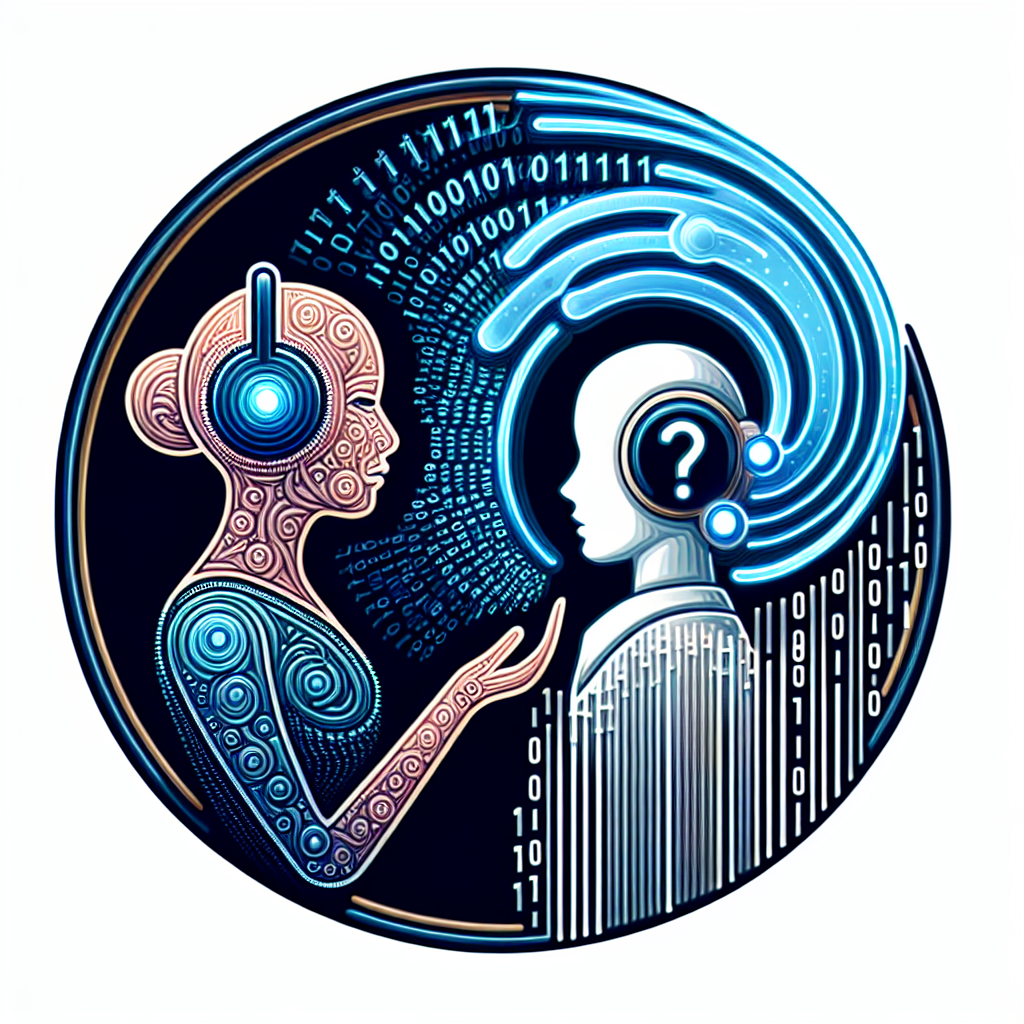
In the dynamic world of business operations, Voice-Based Sales Opportunity Detection offers novel avenues for enhancing revenue generation. With the integration of sophisticated AI systems into everyday business operations, businesses can now detect impending sales opportunities in real-time through the mechanism of analyzing customer calls.

On completion of a conversation with a client, conventional methods of identifying potential business opportunities involve meticulously sifting through call records to extract critical information. However, the deployment of a smart AI receptionist substitutes this hefty process with a more streamlined and automated approach, ensuring no opportunity slips through the cracks.
Forward-thinking businesses that have adopted this AI-driven strategy have been able to significantly boost their sales as the continually learning algorithms accurately identify potential clients. This shift away from manual note-taking to voice-based opportunity detection is seen as a turning point in the realm of sales optimization and revenue generation.
While the idea of a virtual AI receptionist capturing sales opportunities may seem futuristic, the technology has matured past its initial stages of development. Today, it can seamlessly fit into a business's existing tech stack, analyze customer interactions, pinpoint potential sales leads, and even suggest appropriate follow-up actions. This lowers the chances of errors, increases efficiency, and leads to an overall boost in revenue.
In essence, the advent of voice-based sales opportunity detection is transforming the sales process in the business landscape. Investing in this technology is no longer an option, but a necessity for businesses that aspire to stay competitive and relevant in the fast-paced digital era.
The fusion of artificial intelligence (AI) with customer relationship management (CRM) software opens up a world of potential when it comes to voice-based sales opportunity detection. This confluence of innovative technologies introduces a sophisticated method for tracking and analysing client interactions, revealing sales opportunities that could otherwise go unnoticed.
AI-powered CRM platforms, including Salesforce's Einstein and Zoho's Zia, provide features like natural language processing and machine learning algorithms to interpret voice interactions. This automatic analysis can identify key triggers, track sentiment, note trends, and predict customer behaviors, all of which contribute significantly to revenue enhancement.
With the integration of AI into CRM systems, there's an automatic capture of leads and customer data. Voice technology, supported by AI, can pick up on subtle cues in a conversation and flag potential sales opportunities. A simple statement from a customer might reveal an unexpected interest in a new product or a latent need for an additional service. With the conventional CRM approach, such potential might be lost; with AI-enhanced CRM, you have an efficient tool to spot these opportunities.
This AI-CRM integration not only enables real-time responses, but it can also learn from each interaction. Over time, AI's machine learning capabilities mean it becomes more sophisticated, identifying patterns and customer behaviors that humans might miss. An optimized CRM leveraging AI can therefore spot the slightest hint of a sales opportunity and take action before it slips away.
A voice-based CRM system is a game-changer in the sales landscape. By integrating AI, companies can dramatically enhance their customer-service interactions, deeply understand customer behavior, and improve their sales approach. The ultimate result of integrating AI with CRM is an enriched customer relationship and increased revenue generation.
Inevitable advancements in technology have gradually made the automation of various roles more prevalent. One such promising area is Voice-Based Sales Opportunity Detection harnessing the power of Artificial Intelligence (AI). AI receptionists, in particular, offer a new and innovative approach to engaging with customers, enhancing revenue generation by actively identifying potential sales leads through seamless and intelligent conversation analysis.
Akin to the best of human receptionists, AI-inspired ones have been programmed to monitor and analyze customer dialogues in real-time, hunting for buying signals. Leveraging Natural Language Processing (NLP) techniques and machine learning algorithms, they interpret the context and sentiment behind spoken words, further refining their understanding over time to improve their predictive accuracy of identifying viable sales opportunities.

On detecting a potential sales lead, these cutting-edge AI receptionists instantaneously activate appropriate sales workflows. These could range from alerting the sales team of a procurement, queuing a follow-up email sequence, launching an intelligent chatbot to interact with the user, or even deploying personalized offers. This brilliant orchestration of AI with intricate sales tasks ensures businesses capitalize on every sales opportunity, not missing a beat with potential customers, and thus significantly boosting their revenue growth.
Furthermore, an added advantage of these AI receptionists is their relentless working capacity. The tireless performance ensures round-the-clock monitoring and analysis of customer conversations, free from any constraints of human fatigue or capacity that could impede the sales process optimization. Not only is it helping businesses become more agile and proactive in detecting and acting on sales opportunities but also supports in making data-driven decisions for long-term sales strategies.
In conclusion, the introduction of Voice-Based Sales Opportunity Detection and real-time analysis of customer dialogues are revolutionizing the sales landscape, providing businesses with an enhanced approach to revenue generation. Embracing AI receptionists could unquestionably be the game-changer that helps organizations tap into unseen sales opportunities while offering a seamless and personalized experience to their customers.
One of the prominent examples of businesses successfully utilizing voice-based sales opportunity detection is an online retail giant, Amazon. This corporation has been utilizing its voice assistant, Alexa, as a groundbreaking sales tool. Integrated with Amazon's vast product catalog, Alexa has proven to be highly efficient in understanding customer queries, providing product recommendations, and enabling easy purchases. This implementation of voice-based sales opportunity detection has significantly contributed to the boost in Amazon's revenue.
Devoted to evolving with technology, Domino's Pizza also made substantial progress by incorporating voice-based sales into their business strategy. Recognizing the power of AI in improving customer experiences, Domino’s launched an AI voice assistant, 'Dom', for their mobile app. Customers can place orders easily using their voice, making the ordering process more seamless and indeed more enjoyable. This technological implementation has led to a surge in sales, further emphasizing the revenue-generating capacity of voice-based sales opportunity detection.
Another noteworthy example comes from Bank of America. The company deployed its AI-driven voice assistant, Erica, which offers a variety of services including providing updates on accounts, scheduling payments, and more importantly helping customers with personalized product suggestions. This initiative led to debit cards sales growth owing to voice-based opportunity detection technology.
Focusing on the automotive industry, BMW has taken a leap by integrating a voice assistant, Intelligent Personal Assistant, into their vehicles. This assistant not only optimizes driving experiences but also suggests products and services from BMW based on user interactions. This approach has allowed BMW to cross-sell products while enhancing user experience effectively.
To conclude, these different industries adopting voice-assistant technology underscore the potential of voice-based sales opportunity detection. The results witnessed by these successful implementations strongly affirm the role of voice technology as a stepping stone to enhancing revenue generation in the future.
In the vast world of sales automation, Voice-Based Sales Opportunity Detection stands as a shining beacon of innovation. Experts predict that not only will this technology continue to evolve, but also drastically influence the way businesses strategize and engage with their customers.

The current landscape of voice-based technology focuses on voice assistants such as Siri, Alexa, and Google Assistant, giving brands a more personal way to interact with their target audience. But the future holds far more promise. Potentially, AI-driven voice-based technology will be able to understand and respond to human emotions, increasing rapport and trust between businesses and customers. This Emotion AI, as it is referred to, is foreseen to revolutionize customer service and sales via an empathetic, personalized approach.
Another noteworthy advancement to look forward to is the incorporation of advanced analytics into voice-assistants. The technology should be able to gather, analyze, and predict sales data, providing key insights to salespersons and marketers. Hence, Smart Data Analytics will play a pivotal role in shaping the face of sales automation.
Lastly, voice-based AI will extend far beyond smartphones and home assistants. From cars to health devices, IoT devices will increasingly embrace voice-based interfaces, giving more ways for businesses to reach and engage their customers. This wide scale integration assures increased customer connectivity, leading to higher sales opportunities.
In conclusion, the future of voice-based sales opportunity detection is brimming with possibilities. The projected advancements in emotion AI, smart data analytics, and IoT devices promise to make the sales process more intuitive, personalized, and efficient. As this technology continues to evolve, businesses will need to stay abreast of the latest trends, lest they find themselves left behind.
Start your free trial for My AI Front Desk today, it takes minutes to setup!








